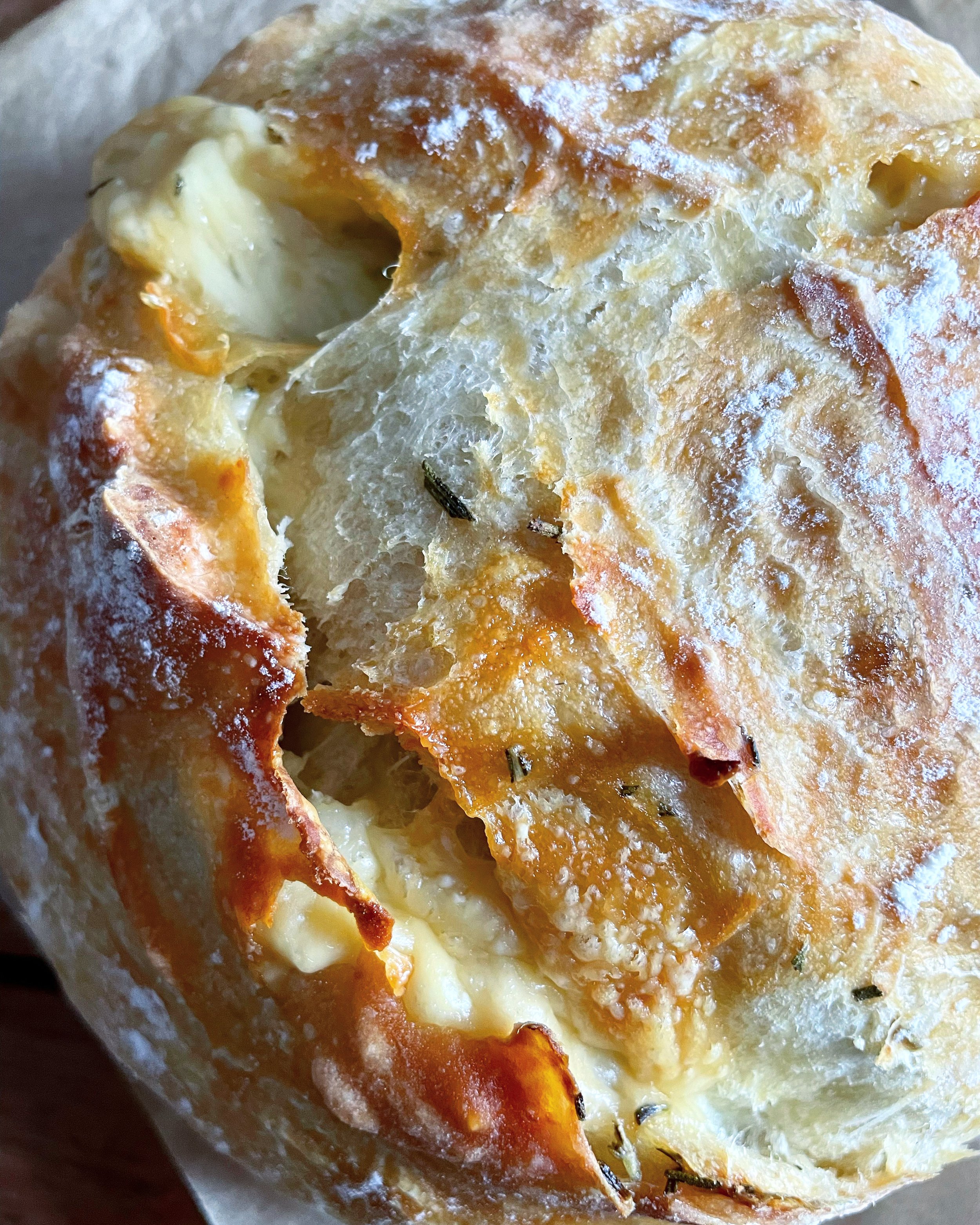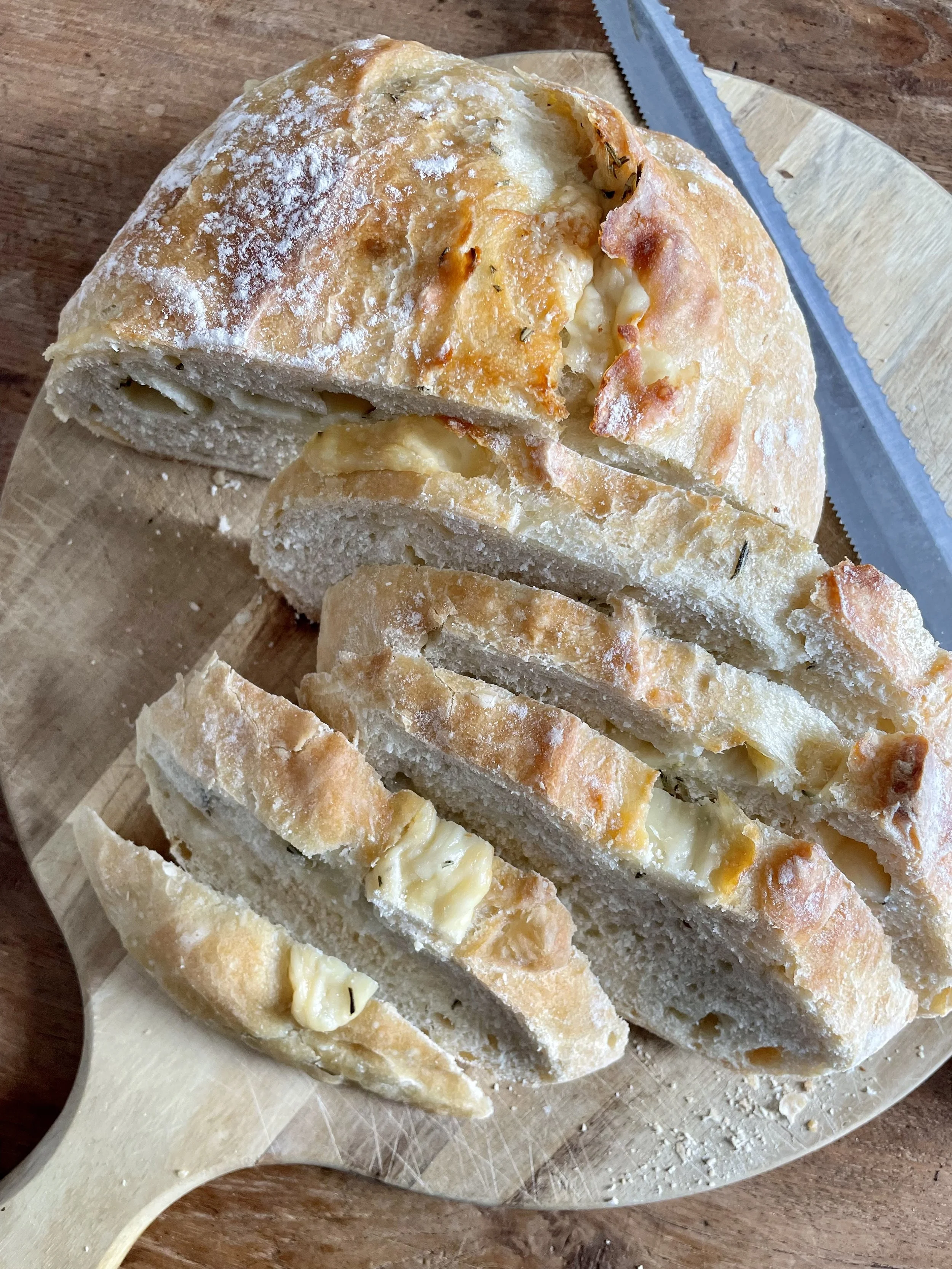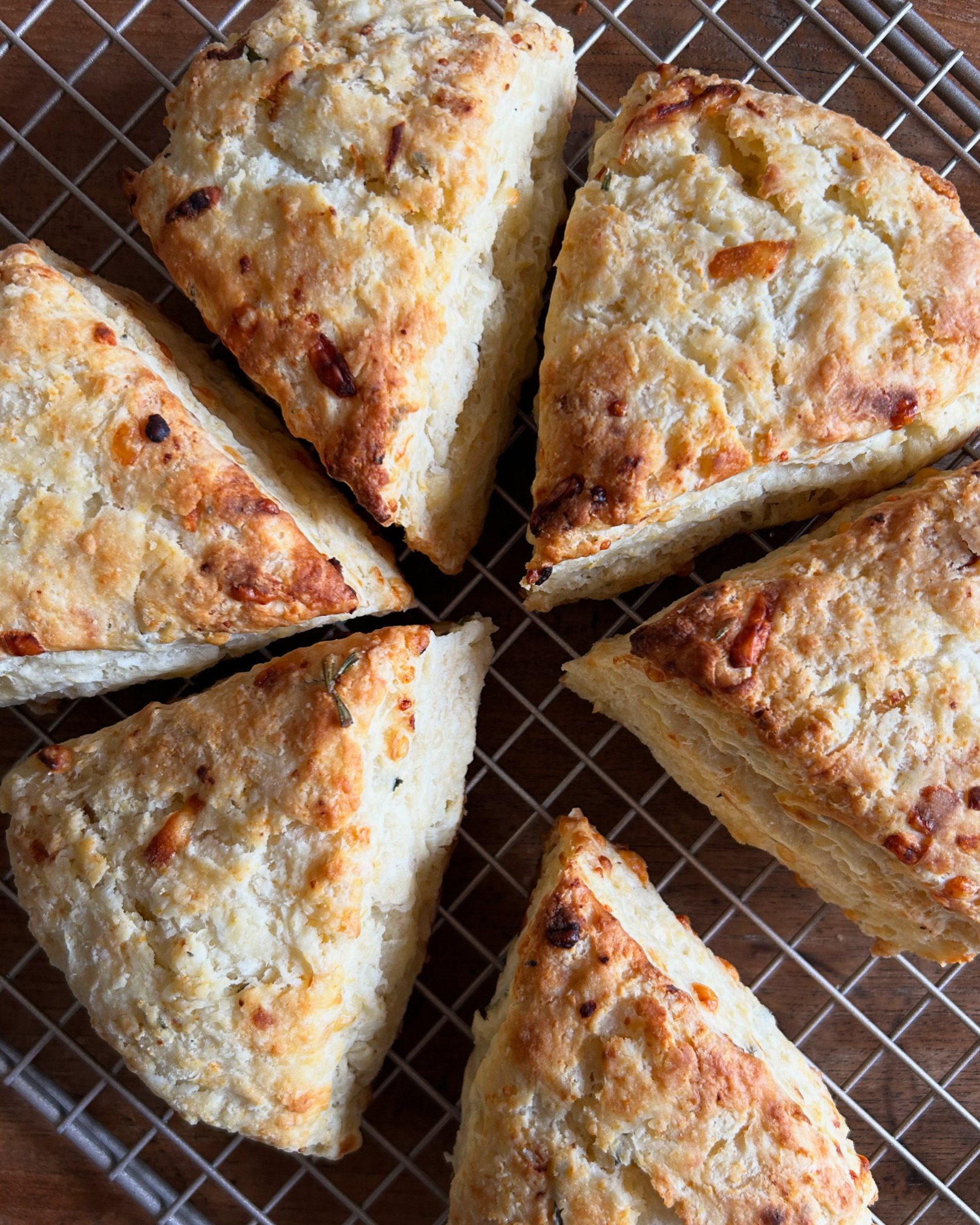No-Knead Rosemary Parmesan Artisan Bread
December 19, 2021 | Updated: April 17, 2024.
This post may contain affiliate links, please see our privacy policy for details.
NOTE: This recipe has been updated to include an additional step in which the dough is cold proofed in the refrigerator prior to baking.
This simple no-knead Rosemary Parmesan Artisan Bread is a highly addictive reader favourite. With a wonderful crusty exterior, it’s light and soft on the inside and deliciously flavoured with lots of nutty Parmesan and aromatic, peppery rosemary.
This recipe builds on my simple 4-ingredient no-knead Everyday Artisan Bread. It’s still super easy to make and requires just a handful of extra ingredients.
How to Make Rosemary Parmesan Artisan Bread in 5 steps
Mix the dough.
Cover and let it rise until it has doubled in size.
Add cheese, shape your dough and dust with flour.
Cover and proof the dough in the fridge for 1 hour or as long as 24 hours.
Turn dough out onto parchment, score and bake.
The cubed Parmesan is added just prior to the cold proof to create the most deliciously melty, cheesy pockets. While most cheesy bread recipes call for shredded cheese, cubing it helps to prevent it from reaching the surface of the dough too early which can result in burning. If you don’t have Parmesan, both cheddar and Gouda are delicious alternatives.
Baking Schedule
Making this rosemary parmesan artisan bread is a two-day process where the bread is mixed and prepared on day one, cold proofed in the fridge overnight, then baked on day two.
This is what it looks like:
Saturday morning: Mix dough, cover and let rise.
Saturday afternoon or evening: Add cheese, shape dough, cover and put it in the fridge.
Sunday morning, afternoon or evening: Remove dough from the fridge, turn it out, score it and bake!
Five More Delicious Bread Recipes
Rosemary & Roasted Garlic Artisan Bread
No-Knead Jalapeño Cheddar Artisan Bread
Easy Small Batch Ciabatta Rolls
This Rosemary Parmesan Artisan loaf is delicious served with pasta, roast chicken or alongside cozy soups and stews. We love it fresh from the oven with good quality olive oil or herby garlic butter and more freshly grated Parmesan cheese! And if you love a good savoury breakfast as much as we do, it also pairs perfectly with a couple of runny eggs and crispy bacon.
The flavours in this No-Knead Rosemary Parmesan Artisan Bread will make your kitchen smell amazing as it bakes, and you will LOVE how simple it is to make!
Top-Rated No-Knead Rosemary Parmesan Artisan Bread
Makes 1 loaf; prep time 18 hours.
You can find additional notes on steps, baking tools and tips for beginners here.
Ingredients:
1½ cups water (360 grams), room temperature (at or near 70°F/21°C)
1 teaspoon (3 grams) active dry yeast
3½ cups (455 grams) bread flour, plus more for dusting
1 teaspoon (3 grams) kosher or fine sea salt
2 tablespoons (6.8 grams) rosemary, finely chopped
1½ cups (187.5 grams) cubed Parmesan cheese (see note below if baking with alternative flours)
Instructions:
Add the yeast to the water and let it sit for 10-15 minutes. While the yeast is activating, in a large mixing bowl whisk together flour, salt and rosemary until evenly distributed.
Add water and yeast to the bowl and mix just until combined. The dough should look a little sticky and stringy and there should still be a little flour around the edges of the bowl.
Cover and let rise somewhere warm (see note below) until it has doubled in size, about 8-10 hours.
Once the dough has doubled in volume, use your hands (or a dough scraper if you have one) to pull the dough out onto a floured surface. With floured hands, gently fold the dough into itself several times just until it holds together. Next, carefully stretch and smooth out dough into a rectangular shape and press Parmesan cubes into dough. Roll up dough into a log shape, adding bits of flour as needed to prevent sticking, and fold the ends underneath. Sprinkle with a little more flour and continue to gently shape the dough just until a flour-covered ball is formed. Lift and place the dough into a flour dusted proofing bowl like this one.
Dust with flour, cover and refrigerate for a minimum of 1 hour or as long as 24 hours. You can even leave it for as long as 48 hours at this point if you’re not able to bake it right away.
When you're ready to bake your bread, preheat oven to 450ºF (232ºC) with a Dutch oven or covered baking vessel inside the oven.
Uncover then turn the dough out onto parchment paper seam side down. If needed, gently turn it with your hands and nudge it into the shape of a loaf. Score the top with a razor blade or the tip of a sharp knife with a design of your choosing. This will allow steam to escape while it’s baking.
Once the oven is preheated, remove the Dutch oven from the oven and transfer the dough, still on the parchment, into the Dutch oven. Cover and bake for 30 minutes, then remove the cover and bake for 15-20 minutes more. Your bread will be done once the top is browned, and it sounds hollow when you tap the top.
Using parchment edges, lift bread from Dutch oven and transfer it to a wire cooling rack to let cool for up to an hour before slicing.
Notes:
Flour: If using all-purpose flour or a gluten free blend rather than a high-protein bread flour, reduce the amount of Parmesan called for by half and cut it into smaller cubes. Alternative flours are lower in protein and lack the structure to hold up to heavier add-ins.
Rise time and temperature: An ambient rise temperature somewhere between ~70º-75º/20º-23ºC is ideal but even high 60's/18º-19ºC should work if the dough is kept away from drafts. Note that rise times can vary based on temperature, environment and ingredients used. You will know your loaf is ready to bake when it has doubled in size, and this can take a minimum of 2-3 hours or as long as a full day. With a little experimentation, you will find the time frame that works best for you.
Storage: This bread is best served on the day it’s made. Leftovers can be toasted, re-heated on a baking sheet at 350ºF (177ºC) for 5 minutes until warmed through or served at room temperature. This loaf will store well in a plastic bag or airtight container in the refrigerator for 2-3 days or sliced and frozen in a well-sealed plastic bag for up to 1 month.















